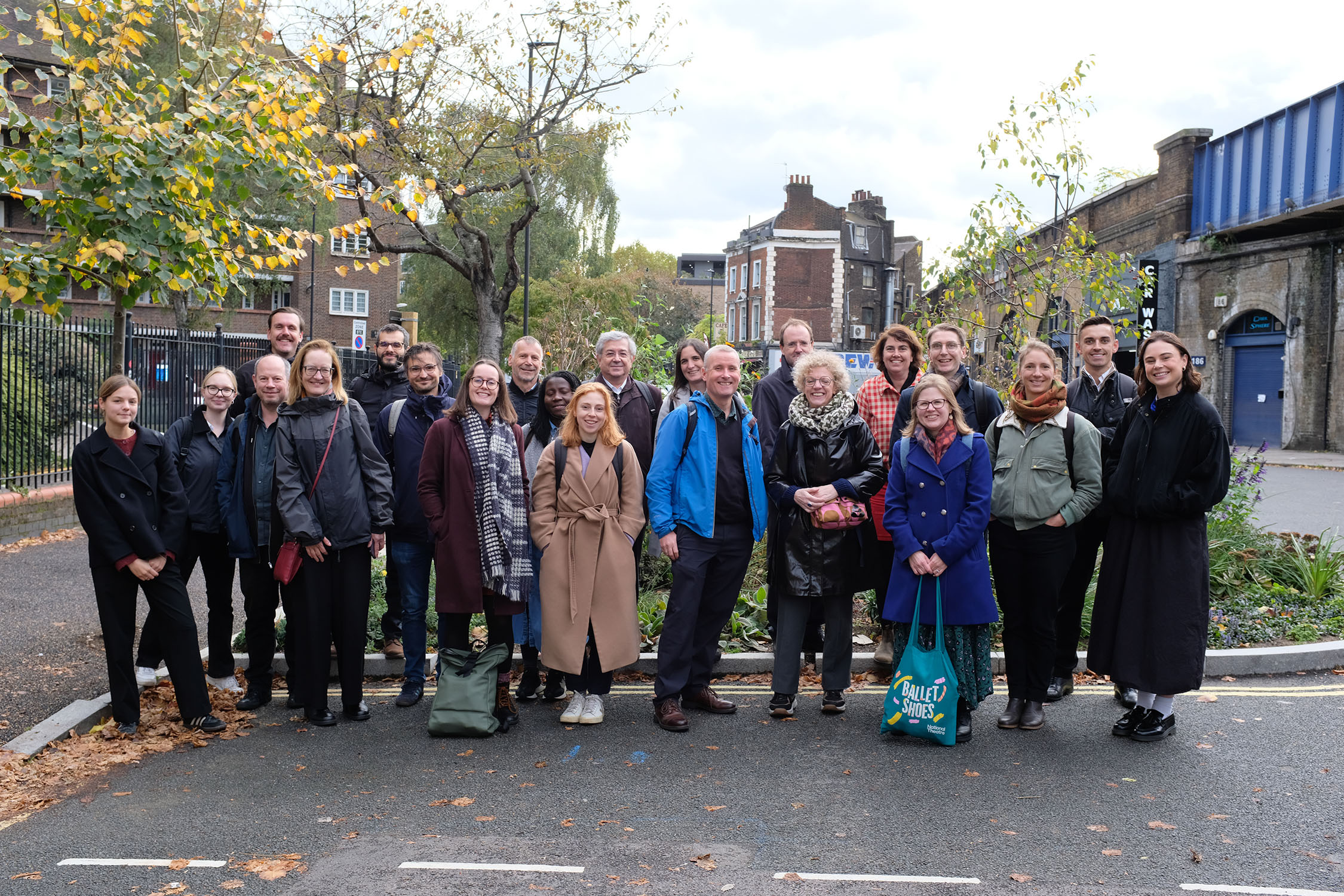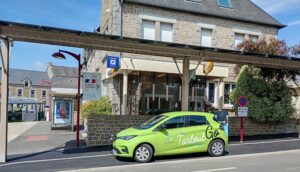A two day roundtable (23-24 October) in London gathered city authorities, transport agencies, researchers and technology providers from across Europe to tackle non exhaust emissions (NEE) from road transport. Participants included representatives from EIT Urban Mobility, C40, Transport for London, the Greater London Authority, Barcelona, Berlin, Brussels, Munich and Flanders, together with Imperial College London and innovators such as Tallano Technologies and The Tyre Collective.
Four main action areas to tackle NEE have been identified and discussed:
- Education and engagement (driver behaviour, public awareness, stakeholder engagement)
Two topics related to education and engagement stood out during the roundtable:
Awareness and political will: The most significant barrier to action on NEE is the issue’s lack of visibility. The public and politicians are already overloaded with other competing global health issues. Meanwhile, PM2.5 levels in many cities fall below the EU AAQD targets, making it difficult to justify NEE-specific measures. Some cities are considering focusing messaging on microplastics from tyre wear and water quality impacts rather than air quality alone, as well as striving to meet more stringent World Health Organization (WHO) air quality guidelines.
Driver Behaviour and Vehicle Maintenance: These actions offer low-cost, high-impact opportunities: for instance, reducing aggressive braking and acceleration, or ensuring proper wheel alignment (sensors can detect misalignment at low cost) can deliver strong NEE reductions. Likewise training for taxi, private hire, and municipal fleet drivers, partnership with driving schools, eco-driving requirements in service contracts, in-vehicle telematics analysing driver behaviour, better messaging about maintenance importance, and periodic technical inspection are further solutions. Public awareness campaigns promoting lighter vehicles can help, but the difficulty lies in political feasibility and public acceptance of such campaigns.
- Policy (regulation, procurement, mode shift, electrification)
Joint Procurement has been identified as a lever to support the uptake of solutions limiting or mitigating tyre and brake particle emissions. There is a need to coordinate fleet requirements across cities, to signal market demand and make the business case more palatable for the industry. Such pooled purchases across cities is also expected to reduce the price of solutions to be procured. Agreeing on common definitions based on the latest scientific evidence (e.g. what are “clean tyres”) for procurement documentation would help. Similarly, a comprehensive listing of companies, capabilities, and maturity assessment of solutions tackling NEEs is needed.
Two vehicle categories hold potential for joint procurement: garbage trucks and buses, which are the main brake dust emitters in urban areas. For instance, Paris incorporates brake particle filters in public tender requirements for garbage trucks and buses.
Vans and light commercial vehicles are electrifying more slowly than private light duty vehicles but are relevant to tackle as they accumulate high mileage. Overall, municipal fleets offer direct procurement control, so it is sensible to start here and then expand to corporate fleets and artisans/sole traders.
Still, there remains several regulatory and financial constraints: insufficient budgets, lack of financial incentives for private companies (there is no equivalent to CO2 quotas for PM 2.5), difficulty regulating vehicle weight due to lack of data (e.g. in England weight is not universally captured as a variable in vehicle registration records or is not always accurately captured. This makes introducing regulatory policies based on vehicle weight more challenging.), acceptance problems, opposition from transport operators unwilling to pay extra charges for solutions to mitigate NEE, no specific legal framework, and the time gap until Euro 7 implementation, all limit action.
Local level policies also contribute to mitigate NEE, for example:
- School Streets: London established the Mayor’s Air Quality Fund supporting local initiatives such as school streets which limit traffic outside schools, protecting the most vulnerable members of society from NEE pollution.
- Speed reductions: 30 km/h limits (Brussels as pioneer) and 20 mph zones improve safety and reduce emissions. Berlin notes 30 km/h limits work well, though design matters—speed bumps can counterproductively for emissions increase braking behaviour.
- Infrastructure investment: Berlin’s modular school street designs reduce time needed to secure works permits from 6 months to 1-2 weeks. Barcelona’s connected tramways and metro extensions expand sustainable options.
- Weight-based taxation and parking fees, as in the case of Paris, which also benefits road safety and helps to reduce congestion.
- Technical interventions (technology, innovation, trials, infrastructure)
Cities need more insights into the maturity of technical interventions, and better feedback loops between trials and policy decisions.
Technology maturity: Cities need to know more precisely the benefits they can expect from different solutions on the market, and how they can help cities meet WHO air quality guidelines. Independent data on the solutions’ costs and benefits is needed to make the business case clearer. Peer-to-peer city exchange is also a proper way for cities to understand a solution performance and price.
Trials are key. Roundtable participants identified three main recommendations :
- Share existing trial results: Cities actively working on mitigating NEEs should trial different solutions and share results, using the same criteria for evaluation.
- Standardize trial methodologies: Develop common questions and metrics for consistent impact measurement. Define success criteria and procurement conditions. Independent academic evaluation by universities and research centres is crucial to ensure impartiality and quality of the results.
- Multiply trials strategically: After trials, authorities can add NEE mitigation criteria in tendering procedures.
- Research and data (knowledge gaps, case-making, modelling, evidence)
Data and Measurement
Air quality and pollution measurement tools need investment. This leads to discrepancies across European cities: some have already good measurement tools in place, but budget constraints limit others. Improving data collection is also beneficial for awareness-raising activities: the collection and use of better-quality environmental data is a requirement to inform both the public and politicians. Real-world emissions measurement, for instance thanks to remote sensing devices, contribute to this data and measurement improvement.
Knowledge gaps: Cities need more granular data on adverse health and environmental costs specifically from NEEs. Key questions include: how does NEE reduction contribute to meeting Air Quality Directive objectives or WHO Guidelines? How do benefits break down between air, soil and water quality (crucial for allocating responsibilities within administrations)? Are NEEs well measured by air quality monitoring stations, or are we missing part of these emissions?
There are still uncertainties about the emission factors, the contribution of tramways to NEE, the impact of reducing speed limits, how different tyre models and road surfaces impact tyre wear emissions, and the toxicity of alternative materials. It remains complicated to distinguish between tyre emissions and road wear under different weather and local conditions.
Conclusions:
- Cities should trial different solutions, standardise evaluation methodology and share results, in order to expand the evidence base to tackle NEE
- Joint city action can accelerate market development thanks to joint procurement. Coordinating fleet requirements across cities signals market demand, reduces costs, and increases influence on industry
- Market readiness remains a critical barrier. There is still a lack of understanding about performance and price of solutions to mitigate NEE. Peer to peer exchange and insights from innovators, research, and academia can help overcome this barrier
- Driver behaviour interventions can have high impact. Reduction in aggressive braking and acceleration (e.g. through fleet driver training) and proper vehicle maintenance (e.g. correct wheel alignment) can deliver measurable NEE reductions at minimal cost.
- NEE suffers from a “branding issue“. Unlike exhaust emissions or climate change, non-exhaust emissions lack visibility and urgency among the public and politicians, making it difficult to prioritize resources and secure political will for dedicated measures.




